Just out in @JPhysiother!
We showed that people with history of low back pain are open to using exercise to prevent recurrence, but they tend to prefer programs that differ from those known to be effective
https://www.sciencedirect.com/science/article/pii/S1836955320301065">https://www.sciencedirect.com/science/a...
We showed that people with history of low back pain are open to using exercise to prevent recurrence, but they tend to prefer programs that differ from those known to be effective
https://www.sciencedirect.com/science/article/pii/S1836955320301065">https://www.sciencedirect.com/science/a...
The best evidence so far shows that exercise can reduce the risk of low back pain recurrence in up to 45%, but most trials where exercise was in fact effective implemented programs that had long duration and high frequency. https://jamanetwork.com/journals/jamainternalmedicine/fullarticle/2481158">https://jamanetwork.com/journals/...
That is indeed a great finding, and a lot of people got pretty excited about it back then. Some argued that we were & #39;ready for implementation& #39;. Were we though?
https://jamanetwork.com/journals/jamainternalmedicine/fullarticle/2481155">https://jamanetwork.com/journals/...
https://jamanetwork.com/journals/jamainternalmedicine/fullarticle/2481155">https://jamanetwork.com/journals/...
What that editorial did not consider was whether a typical person recently recovered from low back pain would be willing to engage with exercise programs that, in order to work, would have to display certain characteristics. https://jamanetwork.com/journals/jamainternalmedicine/fullarticle/2481155">https://jamanetwork.com/journals/...
And we thought that maybe different characteristics of exercise programs would affect people& #39;s willingness to undertake such programs. And that maybe person-level characteristics would also affect these preferences.
In a nutshell, we find that, overall, people preferred choosing exercise over no exercise. Some great news here: people seem keen to do exercise to reduce their risk to prevent recurrence of low back pain.
But who are these people? Folk already doing any type of exercise were 2.66 times more likely to prefer exercise than those not currently exercising;
People in their 50s+ were less likely to prefer exercise. Other stuff like self-efficacy to exercise didn& #39;t seem to matter much.
People in their 50s+ were less likely to prefer exercise. Other stuff like self-efficacy to exercise didn& #39;t seem to matter much.
What sort of exercise did people prefer?
The delivery/supervision mode and setting didn& #39;t seem to matter much. However the longer the program duration the less likely a person was to prefer exercise - and duration seems to be a key feature of effective prevention programs.
The delivery/supervision mode and setting didn& #39;t seem to matter much. However the longer the program duration the less likely a person was to prefer exercise - and duration seems to be a key feature of effective prevention programs.
People also had stronger preferences for more effective programs - every 10% reduction in the *absolute* risk of recurrence increased the odds of people preferring exercise over no exercise by almost 4 times.
Cost also impacted preferences, and the person& #39;s income affected this
Cost also impacted preferences, and the person& #39;s income affected this
As we observed some heterogeneity in preferences in our main analyses, we did a subsequent latent class analysis. Latent class models are used to examine preference heterogeneity and to simplify heterogeneous populations into more homogeneous classes. https://ja.ma/3aBBSxz ">https://ja.ma/3aBBSxz&q...
We described a latent class of people who had strong preferences for preferring *no exercise* over exercise. These people were more likely to be middle aged-men on lower incomes and with lower levels of self-efficacy to exercise.
There are lots of potential implications from our study. I& #39;ll list a few and briefly comment on them. This is my favourite: HCPs discussing exercise to prevent back pain with patients need to have an honest conversation about what patients should expect, and more  https://abs.twimg.com/emoji/v2/... draggable="false" alt="👇" title="Rückhand Zeigefinger nach unten" aria-label="Emoji: Rückhand Zeigefinger nach unten">
https://abs.twimg.com/emoji/v2/... draggable="false" alt="👇" title="Rückhand Zeigefinger nach unten" aria-label="Emoji: Rückhand Zeigefinger nach unten">
This could also explain why adherence to more intensive exercise prevention programs may not be optimal.
**Watch this space**
**Watch this space**
There is also the question about the latent class we observed. I do think we need more studies to understand whether this class of people can indeed be observed outside our dataset, but it gives a starting point.
There are likely many barriers across many levels (eg person, health care system, built environment, etc) that could reduce the uptake of preventive programs - it would be great to map them all out.

 Read on Twitter
Read on Twitter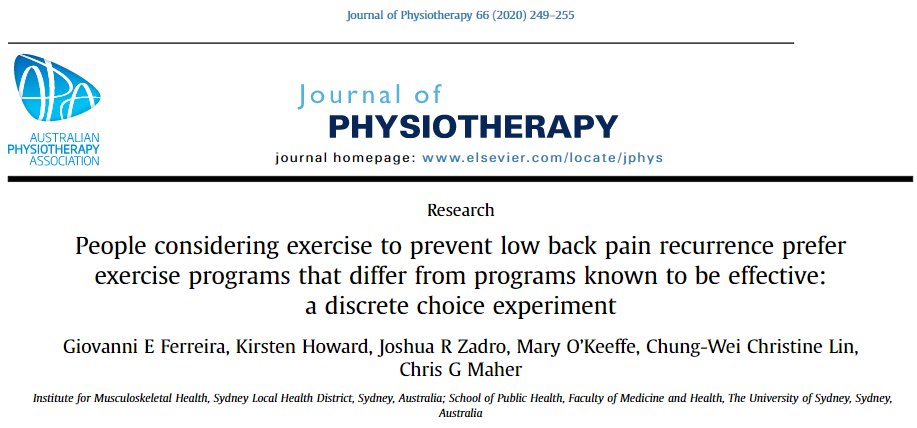
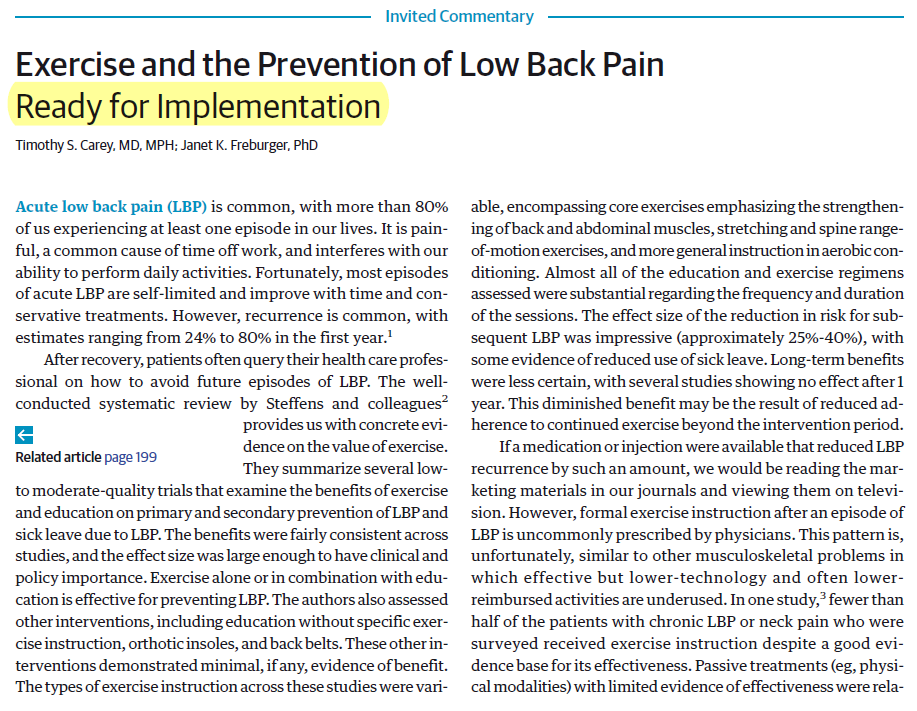
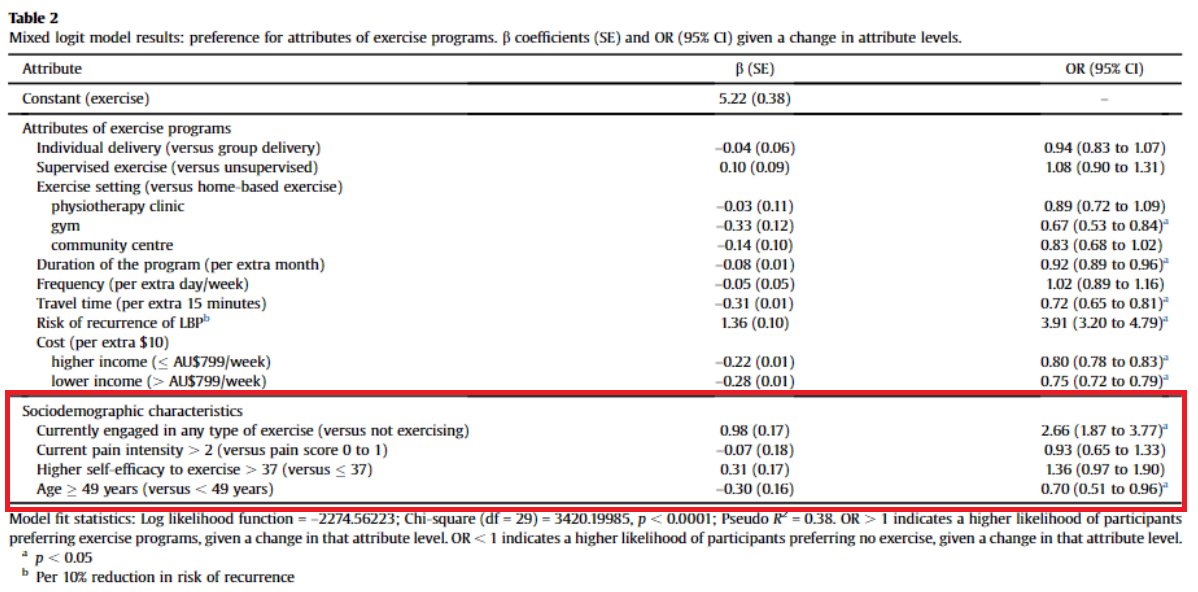
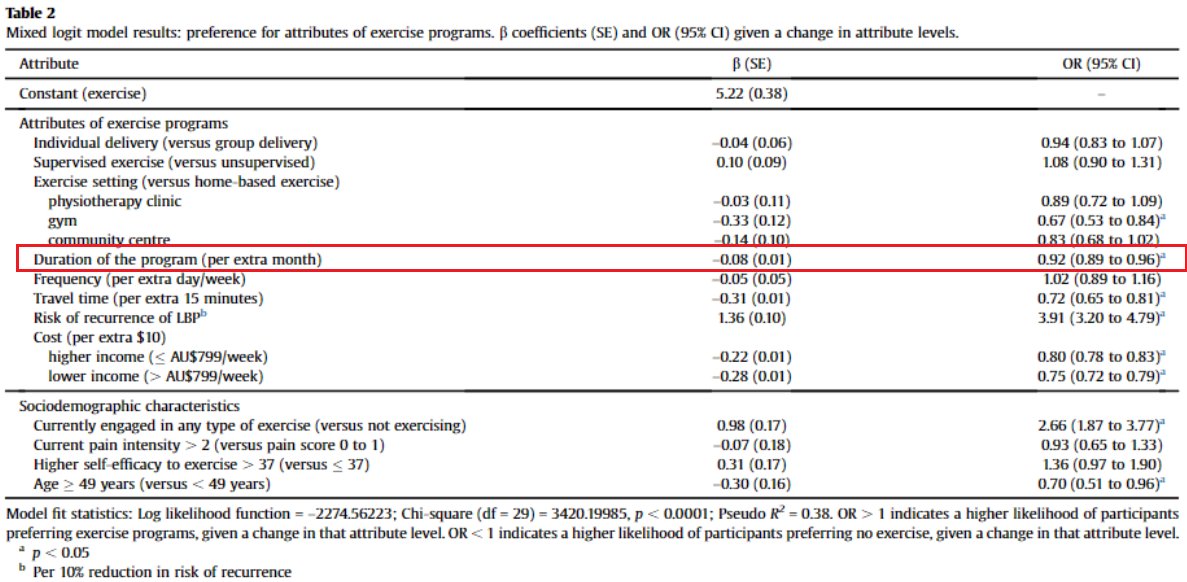
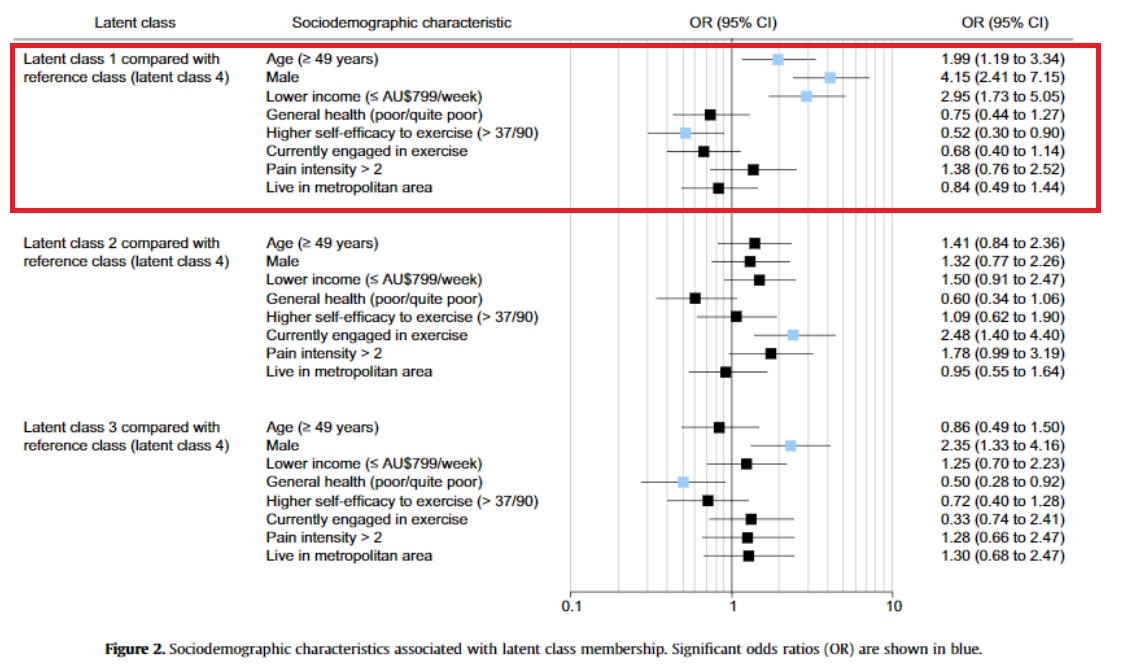
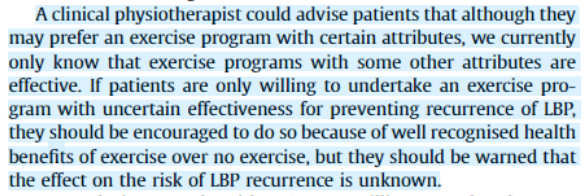 " title="There are lots of potential implications from our study. I& #39;ll list a few and briefly comment on them. This is my favourite: HCPs discussing exercise to prevent back pain with patients need to have an honest conversation about what patients should expect, and more https://abs.twimg.com/emoji/v2/... draggable="false" alt="👇" title="Rückhand Zeigefinger nach unten" aria-label="Emoji: Rückhand Zeigefinger nach unten">" class="img-responsive" style="max-width:100%;"/>
" title="There are lots of potential implications from our study. I& #39;ll list a few and briefly comment on them. This is my favourite: HCPs discussing exercise to prevent back pain with patients need to have an honest conversation about what patients should expect, and more https://abs.twimg.com/emoji/v2/... draggable="false" alt="👇" title="Rückhand Zeigefinger nach unten" aria-label="Emoji: Rückhand Zeigefinger nach unten">" class="img-responsive" style="max-width:100%;"/>


